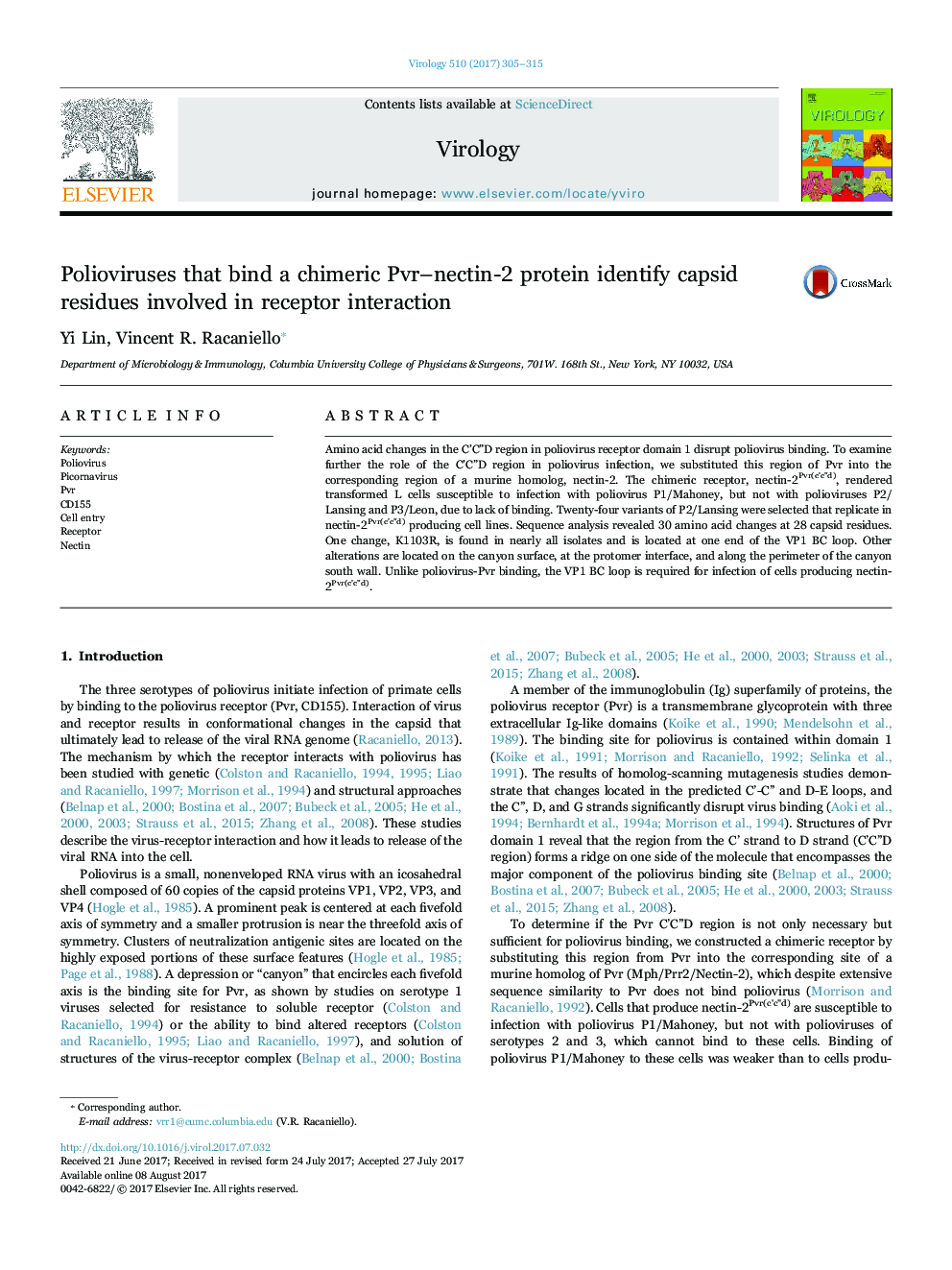| Article ID | Journal | Published Year | Pages | File Type |
|---|---|---|---|---|
| 5675213 | Virology | 2017 | 11 Pages |
â¢A short part of the poliovirus receptor was swapped with a related protein that does not support virus infection.â¢The chimeric protein allowed infection by type 1 but not type 2 or type 3 polioviruses.â¢Selection of type 2 polioviruses that could bind the chimeric receptor identified regions of the capsid involved in receptor interaction.
Amino acid changes in the C'C”D region in poliovirus receptor domain 1 disrupt poliovirus binding. To examine further the role of the C'C”D region in poliovirus infection, we substituted this region of Pvr into the corresponding region of a murine homolog, nectin-2. The chimeric receptor, nectin-2Pvr(c'c"d), rendered transformed L cells susceptible to infection with poliovirus P1/Mahoney, but not with polioviruses P2/Lansing and P3/Leon, due to lack of binding. Twenty-four variants of P2/Lansing were selected that replicate in nectin-2Pvr(c'c"d) producing cell lines. Sequence analysis revealed 30 amino acid changes at 28 capsid residues. One change, K1103R, is found in nearly all isolates and is located at one end of the VP1 BC loop. Other alterations are located on the canyon surface, at the protomer interface, and along the perimeter of the canyon south wall. Unlike poliovirus-Pvr binding, the VP1 BC loop is required for infection of cells producing nectin-2Pvr(c'c"d).
